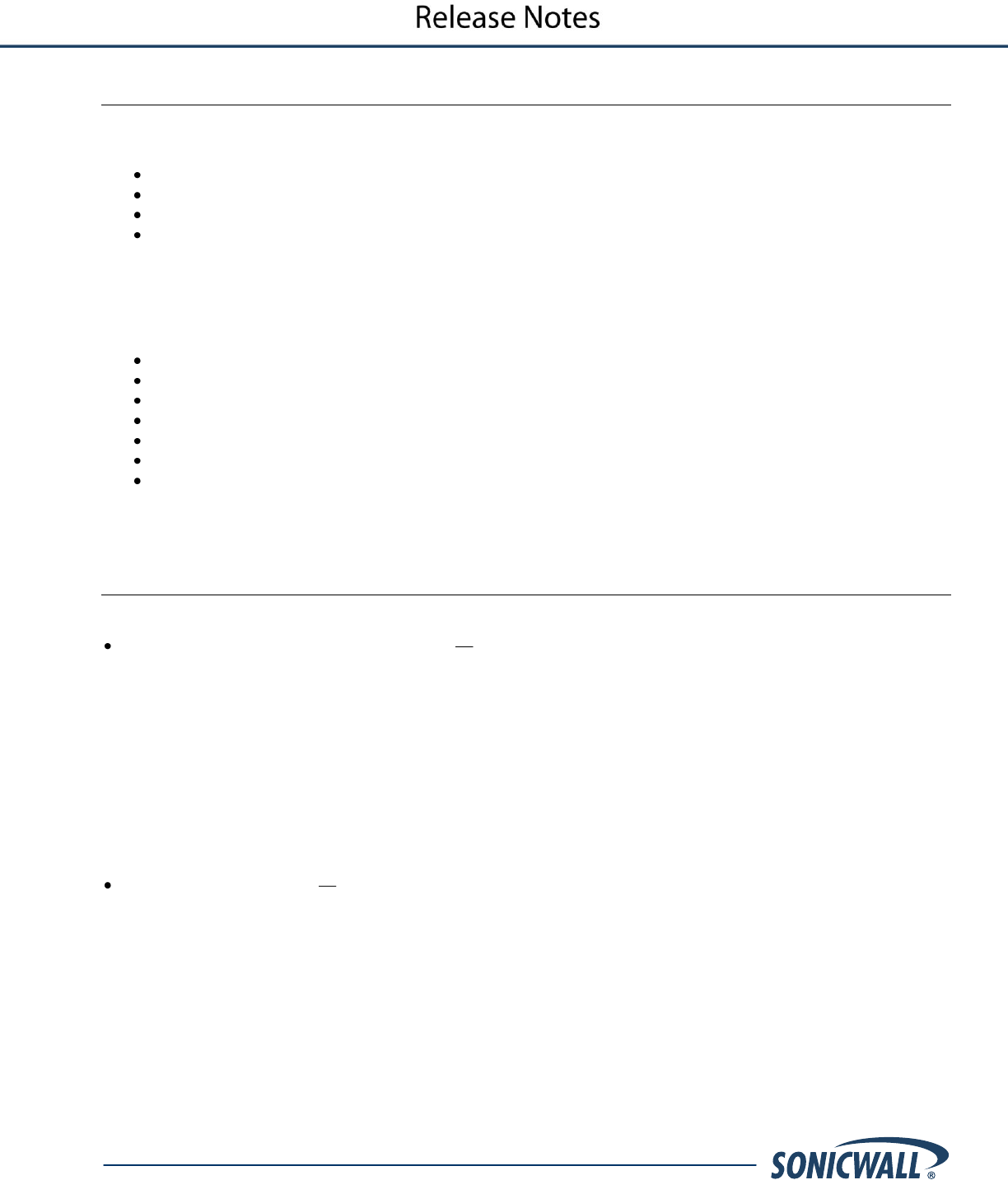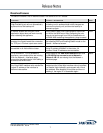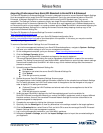
2
SonicOS Enhanced 5.6.5.1 Release Notes
P/N 232-002002-00 Rev B
Licensing
Licensing for the Active/Active Clustering (including Stateful High Availability) and BGP Advanced Routing features
is included with the following SonicWALL NSA E-Class appliances, when registered:
SonicWALL NSA E8500
SonicWALL NSA E7500
SonicWALL NSA E6500
SonicWALL NSA E5500
To activate these licenses, register each appliance on MySonicWALL. Even when deployed in a High Availability
pair, each unit must be individually registered to activate the licenses.
When available, a SonicOS Expanded License can be purchased for the following SonicWALL appliances to
activate the BGP Advanced Routing feature:
SonicWALL NSA 5000
SonicWALL NSA 4500
SonicWALL NSA 3500
SonicWALL NSA 2400
SonicWALL NSA 240
SonicWALL TZ 210 / 210 Wireless-N
SonicWALL TZ 200 / 200 Wireless-N
Note: Active/Active Clustering is supported only on SonicWALL NSA E-Class appliances.
No free trial is available for the BGP Advanced Routing feature.
Key Features
The following key features are available in SonicOS 5.6.5.1:
Active/Active Clustering High Availability Active/Active Clustering is the most recent addition to the High
Availability feature set in SonicOS. A typical Active/Active Clustering deployment includes four firewalls of the
same SonicWALL model configured as two Cluster Nodes, where each node consists of one Stateful High
Availability pair. For larger deployments, the cluster can include eight firewalls, configured as four Cluster
Nodes.
With Active/Active Clustering, you can assign certain traffic flows to each node in the cluster, providing load
sharing in addition to redundancy, and supporting a much higher throughput without a single point of failure.
Earlier High Availability features, such as Stateful Synchronization and Active/Active DPI (previously called
Active/Active UTM), continue to be supported and are recommended for use in conjunction with Active/Active
Clustering.
Active/Active Clustering is supported only on SonicWALL NSA E-Class appliances.
BGP Advanced Routing Border Gateway Protocol (BGP) advanced routing is a large-scale routing protocol
used to communicate routing information between Autonomous Systems (AS’s), which are well-defined,
separately administered network domains. BGP support allows for SonicWALL security appliances to replace a
traditional BGP router on the edge of a network's AS. The current SonicWALL implementation of BGP is most
appropriate for "single-provider / single-homed" environments, where the network uses one ISP as their Internet
provider and has a single connection to that provider. SonicWALL BGP is also capable of supporting "single-
provider / multi-homed" environments, where the network uses a single ISP but has a small number of separate
routes to the provider. Because BGP transmits packets in the clear, SonicWALL supports using an IPSec tunnel
for secure BGP sessions. The IPSec tunnel is configured independently within the VPN configuration section of
the SonicOS Web-based management interface, while BGP is enabled on the Network > Routing page and
then configured on the SonicOS Command Line Interface.
BGP Advanced Routing is available on all SonicWALL NSA and TZ appliances supported in SonicOS 5.6.5.1.















